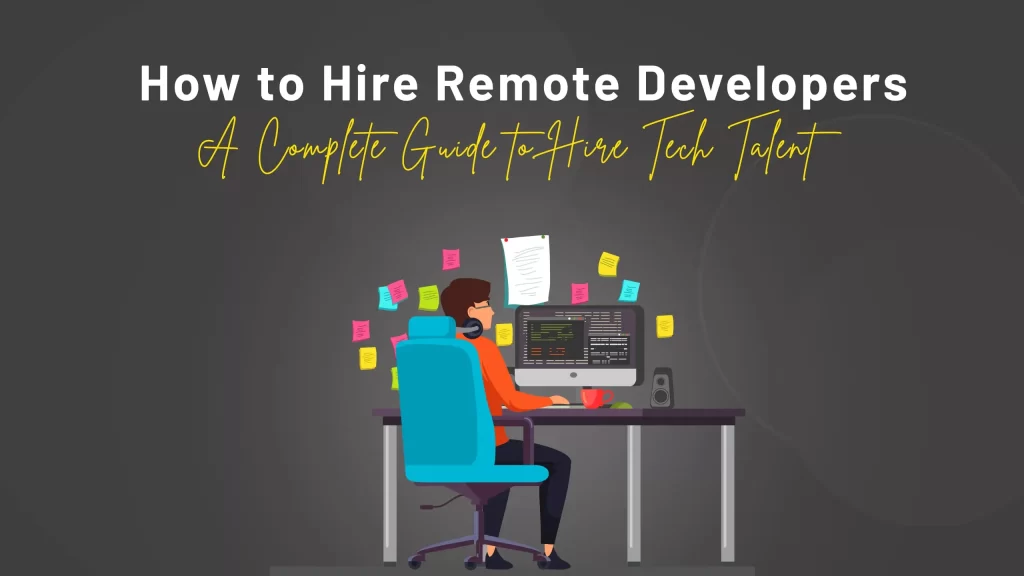
The global talent pool has shrunk thanks to the magic of the internet. Gone are the days of being restricted to local candidates; your ideal developer could be sipping coffee in Bali or hustling late into the night in Berlin. The rise of remote work has revolutionized the tech industry, and it’s no wonder companies are increasingly turning to remote developers to fuel their projects.
But hiring in a decentralized world presents unique challenges. How do you find the right talent amongst a sea of applicants? How do you ensure effective communication and collaboration across continents? Fear not, aspiring tech leader! This comprehensive guide will equip you with the knowledge and tools to navigate the exciting (and sometimes tricky) world to hire remote developers.
Step 1: Defining Your Needs
Before embarking on your remote talent hunt, take a step back and clearly define your needs.
Project Scope and Requirements: What tasks will the developer handle? Are you building a new app, maintaining existing software, or tackling a specific technical challenge?
Technical Skills: What programming languages, frameworks, and tools are required? Be specific, but avoid getting bogged down in niche skills that might limit your applicant pool.
Soft Skills: Are you looking for a self-starter who thrives independently, or do you prefer someone who collaborates seamlessly within a team? Communication, time management, and problem-solving abilities are also crucial factors to consider.
Budget and Timeline: How much are you willing to pay? Determine a salary range and set a realistic timeline for hiring.
Step 2: Finding the Right Platforms
With your needs in mind, it’s time to delve into the vast ocean of talent pools. Explore various platforms tailored to remote hiring, each with its advantages and drawbacks:
Freelance Marketplaces: Upwork, Fiverr, and Toptal offer access to a vast pool of developers with varying expertise and rates. While convenient, vetting skills and cultural fit can be challenging.
Remote Hiring Platforms: Turing, Gun.io, and Codementor pre-vet developers based on skill sets and provide additional support with project management and collaboration tools. Their fees can be higher, but the quality of talent is often guaranteed.
Professional Networks: LinkedIn and GitHub are goldmines for experienced developers actively seeking new opportunities. Utilize the advanced search tools to target specific skills and locations.
Remote-First Companies: Consider recruiting from established remote-first companies whose employees have already adapted to the nuances of virtual work.
Step 3: Craft the Perfect Job Description
Your job description is your first impression – make it count! Clearly outline the project, highlight the company culture, and showcase the unique benefits of working remotely for you. Don’t forget to:
Use targeted keywords: Attract relevant talent by using specific skills and technologies in your description.
Sell the opportunity: Not just the technical requirements, but the exciting challenges and the impact of the project.
Be transparent: Mention salary range, remote working policies, and communication expectations.
Include a clear call to action: Guide applicants on how to apply and what information to include.
Step 4: Screening and Interviewing
Sifting through applications requires a keen eye. Focus on candidates who align with your project requirements and cultural fit. Utilize pre-screening questionnaires to gauge technical skills and assess initial compatibility. Then, move on to virtual interviews:
Technical Coding Assessments: Platforms like HackerRank and Codility offer standardized tests to evaluate coding skills and problem-solving abilities.
Video Interviews: Use video conferencing tools like Zoom or Google Meet to assess communication, cultural fit, and interpersonal skills. Prepare a set of behavioral and technical questions to gain deeper insights.
Reference Checks: Contact previous employers or clients to verify experience and gather feedback on work ethic and collaboration skills.
Step 5: Onboarding and Collaboration
Congratulations! You’ve found your ideal remote developer. But the work isn’t over yet. Effective onboarding and ongoing communication are crucial for success:
Set clear expectations: Define goals, project milestones, and communication channels. Use project management tools like Asana or Trello to keep everyone aligned.
Regular communication: Schedule daily stand-up calls, weekly team meetings, and one-on-one sessions to maintain a sense of connection and address any concerns.
Promote collaboration: Encourage asynchronous communication tools like Slack and Zoom chat to facilitate information sharing and problem-solving across time zones.
Feedback and recognition: Provide regular feedback and appreciation to keep your remote developer motivated and engaged.
Invest in tools and resources: Ensure your developer has access to the necessary technology, software licenses, and learning resources to do their job effectively.
